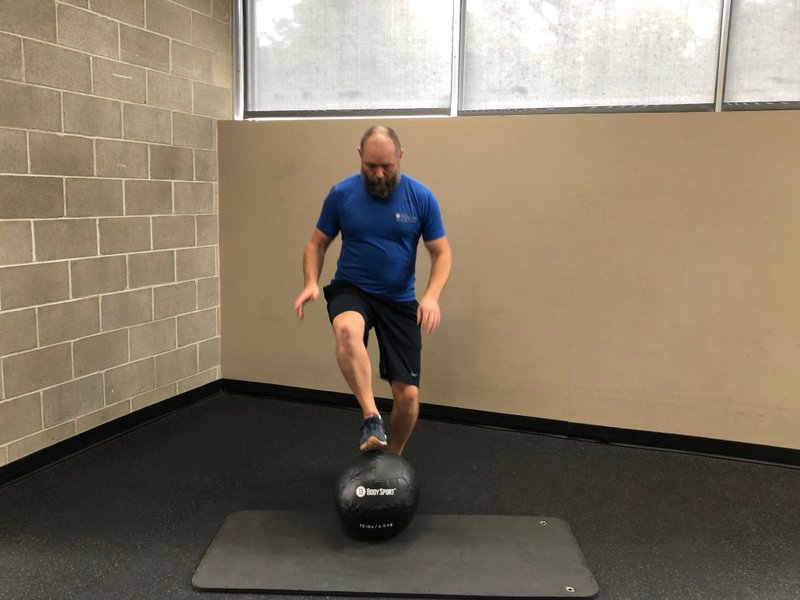The term "plyometrics" often conjures up visions of people jumping off boxes. It's the type of intense training associated with athletics, competition and similar pursuits. But low-intensity plyometric exercise also has value, and it can be appropriate for the average exerciser.
Plyometrics are defined as repeated, rapid, stretching and contracting of muscles to increase muscle power. This simple, straightforward definition adequately describes the stretch/contraction rhythm of plyometric training, but it's important to note that intensity level is not part of the definition — for good reason.
Intensity can be adjusted for plyometric training simply, and dropping the effort level to extremely low levels is a great way to introduce newbies to plyometrics.
I like to use a numeric scale, the good old from 1 to 10, to give people an objective way to evaluate how intensely they are working when performing plyometric exercises. Using this scale, "1" equates to an activity as simple as jumping rope. A "10" equivalent would be jumping off a 4-foot-tall box, landing, then immediately leaping as high as possible.
I recommend intensity levels between 1 and 4 when I add plyometrics to an average-Joe workout program. There's no compelling reason that the average exerciser would need to do high-intensity plyometrics — unless they want to do high-performance training or competitive sports. Using lower intensity levels allows them to enjoy the benefits of plyometric training without the high risk for injury.
Jump rope, small jumps and upper body plyometrics can all be incorporated safely — but it's important to introduce them slowly. The stretch reflex and immediate contraction can cause joint damage if pushed with too much intensity.
This week's exercise has such a low intensity that it barely qualifies as plyometric, so I think it's a great place to start for newcomers to this training method. The Toe Tap can be used for various purposes, but my favorites are during an active warmup or in between strength-training sets.
In either case, the Toe Tap will keep the heart rate elevated and generate some blood flow in the lower body.
1. Select a large, soft-sided medicine ball that's relatively light (10-15 pounds).
2. Place the medicine ball on the floor and stand facing it with your feet shoulder-width apart.
3. From this position, lift your right foot up and "tap" the top of the ball.
4. Now, quickly switch feet so that your left foot comes off the ground as soon as you move the right foot off the ball.
5. Continue alternating toe taps on top of the ball for 20 seconds for a great warmup of the lower body.
The Toe Tap is a fantastic warmup activity because the light plyometric movement allows the lower leg muscles to really experience the stretch reflex in order to generate more blood flow than would otherwise be achieved in a traditional cardiovascular warmup. It's especially useful to prepare for a jog, run, or lower body strength training session. Enjoy!
Matt Parrott has a doctorate in education (sport studies) and a master's in kinesiology and is certified by the American College of Sports Medicine.
Style on 10/07/2019

